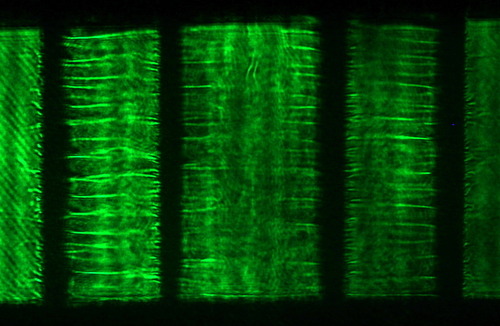My previous post achieved unprecedented popularity, probably due to a quirk of the Facebook newsfeed deciding it was high priority that everyone know about the wonders of mechanical pencil refills. Here’s a follow-up:
When I started these experiments, I wasn’t sure which brand of pencil leads to use, so I bought lots of different ones. The first two experiments I did were far more successful than I’d anticipated, so we quickly decided to do a few more. Minor problem – I was using a different brand of pencil lead each time, because I’d only bought one pack of each brand. No problem though, right – how different can pencil leads be?
Ah, how naive. Thanks to the wonders of experimental physics, I now know it makes all the difference. In first two experiments I did, I used two of the fast x-ray cameras to take eight images at different times. This allowed me to work out when the plasma was formed in the centre of the cylinder of pencil leads, so I could use some more detailed diagnostics to look at the right time. Armed with this knowledge, we set up a laser-based diagnostic that measures the temperature of the plasma.

Big fat column of plasma, rippling beautifully in the centre of a cylinder of pencil leads.
And we didn’t see anything. It was like there was no plasma there at all! I was so confident that I had looked at the right time that we just decided to repeat the experiment, assuming something had gone wrong with the laser. The second time, we still didn’t see anything. I took a closer look at some of the results, and realised there just wasn’t a plasma there.

There’s nothing there! Plasma flowing from the pencil leads makes those horizontal tendrils, but in the centre the light is uniform and undisturbed.
What has changed? Well, the brand of pencil lead. And apparently, it was so different to the ones I’d used in the first experiments that the plasma didn’t form when I expected it to form. The horizontal ripples are more widely spaced in the second image than the first, and we believe the spacing is to do with the rate at which plasma flows from the wires, another indication that these pencil leads are behaving very differently.
Fortunately, the Union shop at Imperial stocks one of the brands I used in an earlier experiment, so I popped over there this afternoon and bought some more. Tomorrow I’ll redo the same experiment, but with the right pencil leads!
This really underlines that I need to know more about the material I’m turning into a plasma. Thanks to several responses on facebook (especially Jarvist Frost), I got in touch with the head of mass spectroscopy in the Chemistry department at Imperial, and she pointed me towards a private company that do exactly the sort of analysis I need. When I’ve stopped doing experiments, I’ll get in touch and we might even get part III of this saga.